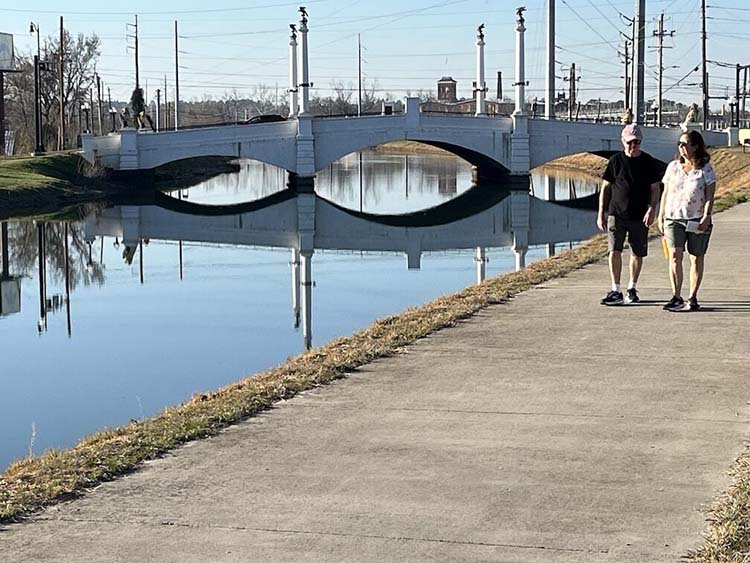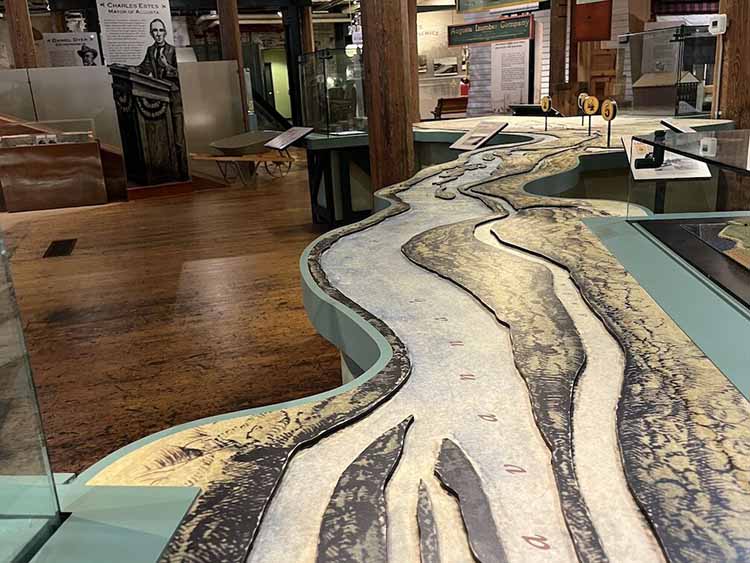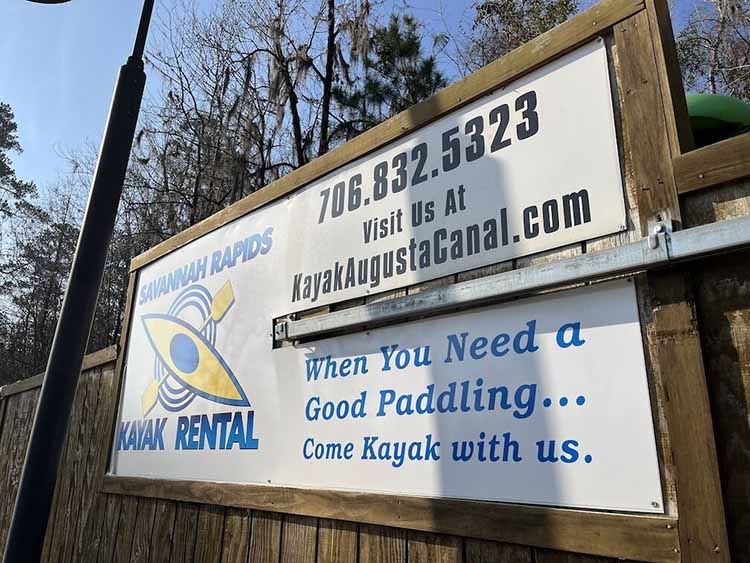
By Tom Adkinson
Aug 29, 2025
 |
|---|
| A tour boat eases up the Augusta Canal against the backdrop of massive textile mills from the city’s industrial past. Photo courtesy Visit Augusta |
AUGUSTA, Ga. – It was difficult to get excited with high school history lessons about the Industrial Revolution in America, the fall line,
and textile mills, but a visit to an elongated attraction in Augusta can make those history lessons come to life, especially since alligators
play a small role in the story.
 |
|---|
| Two visitors stroll along a walkway beside the Augusta Canal. The full canal trail goes seven miles upstream to the fall line of the Savannah River. Image by Tom Adkinson |
The attraction is the Augusta Canal National Heritage Area, a seven-mile-long corridor of nature and American history whose visitor
center demonstrates clearly the scale of 19th-century manufacturing and the impact of a civil engineering feat from 1845 that serves
Augusta to this day.
The Masters Golf Tournament puts Augusta in the spotlight for a long weekend every April, but the Augusta Canal National Heritage
Area is a year-round attraction – and access is considerably easier and less expensive.
 |
|---|
| A model of the Augusta Canal and the Savannah River helps Discovery Center visitors understand the boldness of an 1845 development dream. Image by Tom Adkinson |
The canal starts at the fall line, the spot where the Savannah River drops off the piedmont onto the coastal plain. Its channel remains
roughly parallel to the river, and innovator Henry Cumming predicted an array of factories would use the redirected water for power
and therefore transform Augusta into “the Lowell (Mass.) of the South.”
 |
|---|
| Machines left over from textile mills that once thrived along the Augusta Canal are part of the Discover Center’s displays.. Image by Tom Adkinson |
The first mills went into operation in 1847. Others came along, and Augusta was important to the Confederacy for making gunpowder,
uniforms, and hardtack. Real success came after the Civil War when the canal was expanded and giant textile mills and an ironworks
were built.
 |
|---|
| A modest waterfall marks the fall line of the Savannah River, where water is diverted into the Augusta Canal. Image by Tom Adkinson |
The city used waterpower to generate electricity (imagine the excitement in 1892 when electric streetcars began rolling and street
lighting brightened the night) even as the mill economy waned and eventually died. Subsequent ideas that included draining the canal
for highway development didn’t materialize, and then the canal became a National Historic Landmark.
New ideas for recreation and historical interpretation evolved, leading to the Augusta Canal Discovery Center, which occupies part of a
former textile mill. A novel aspect of this building today is that it houses turbines that continue to generate electricity. Revenue from that
power generation helps support the Discovery Center and its extensive displays about the Industrial Revolution in the South.
 |
|---|
| When you need a good paddling,” a kayak rental company has equipment for you along the Augusta Canal. Image by Tom Adkinson |
The city of Augusta owns and operates the canal and the Discovery Center, but they have a special relationship with the National Park
Service because they are part of a national heritage area. That means you can get a stamp for your NPS Passport booklet here, even
though the park service doesn’t administer the destination.
The Discovery Center is also the starting point for canal boat tours. Trips are in 65-foot-long Petersburg boats that carry 49 passengers.
Boats of this design, named for the inundated town of Peterburg, Ga., once carried cargo between Augusta and Savannah on the
Atlantic coast. Narrators on the boat tours discuss the construction of the canal, the development of the mill economy, and wildlife along
the canal.
The area between the canal and the river is a wetland, a major asset for nature lovers in an urban environment. Birds are abundant
(herons, hawks, egrets, ducks, cormorants, kingfishers, and more), as are deer, fox, beavers, raccoons, muskrats, and other animals.
And about those alligators? Yes, even here in the city, alligators have their place and should be respected. That’s why the first item on the
canal’s list of trail rules reads, “Don’t feed the alligators.”
Trip-planning resources: AugustaCanal.com and VisitAugusta.com
(Travel writer Tom Adkinson’s book, 100 Things To Do in Nashville Before You Die, is available at Amazon.com.)
